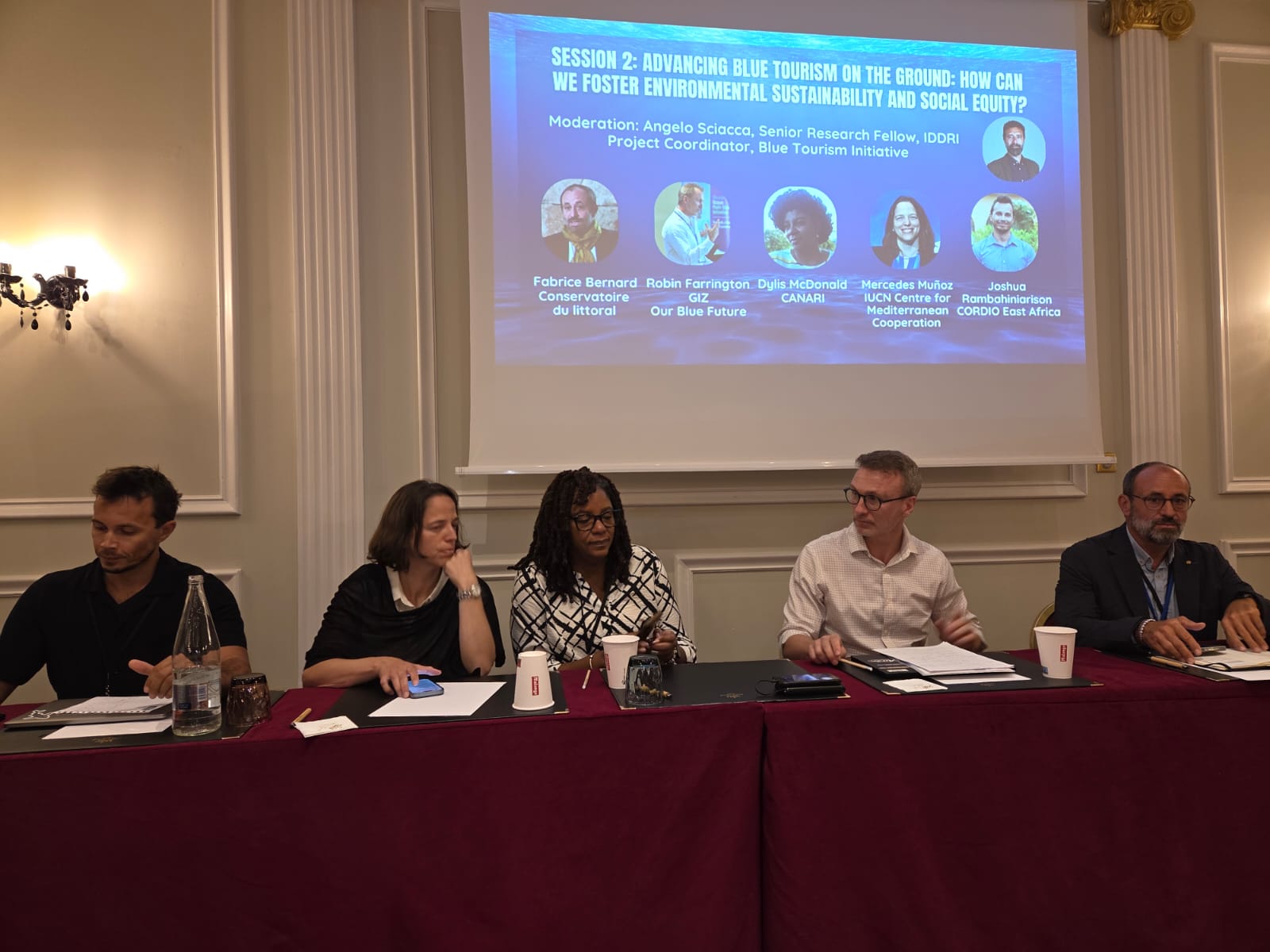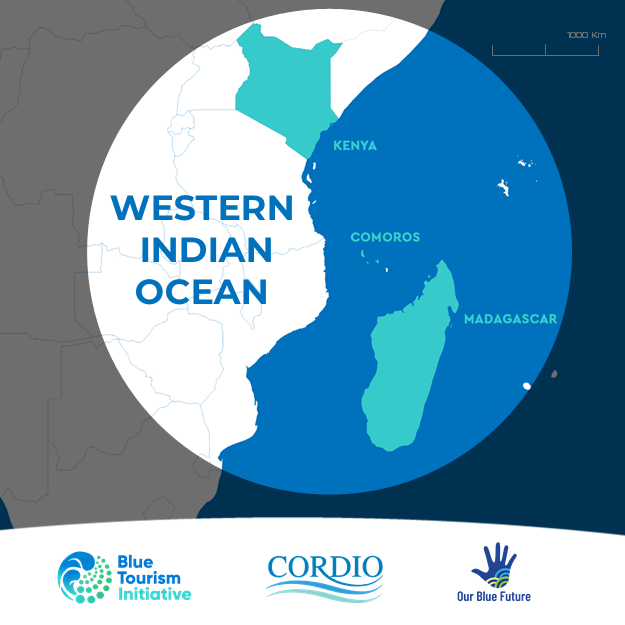The ocean and the blue economy have a significant role to play in transitioning to a circular economy. A circular economy model in the ocean and blue economy would mean designing products and services that are reusable, recyclable, and non-toxic, while also preserving and restoring the health of the marine ecosystem. In this article, we will delve into the concept of circular economy, which is gaining momentum worldwide as a sustainable economic model. As we face increasing environmental challenges, it’s imperative to shift towards a circular economy to reduce waste and carbon emissions. We will explore the principles, benefits, and challenges of circular economy and examine strategies for its implementation.
The Case for a Circular Economy vs Linear Economy
Circular economy is often contrasted with the traditional linear economy model, which involves a linear flow of resources from extraction to production, consumption, and disposal. This approach results in large amounts of waste and pollution, contributing to environmental degradation and resource depletion.
In contrast, circular economy focuses on creating a closed-loop system where resources are kept in use for as long as possible, reducing waste and pollution. This model involves designing products and services with reuse and recycling in mind, as well as prioritizing renewable energy sources and regenerative agriculture.

Adopting circular economy practices can lead to significant environmental and economic benefits. According to the Ellen MacArthur Foundation, a leading organization in circular economy research, transitioning to a circular economy could create $4.5 trillion in economic benefits by 2030, while also reducing global carbon emissions by 39%.
Circular economy can create new job opportunities and support local economies by promoting resource efficiency and reducing reliance on costly imports. For example, a study by the European Union estimated that the circular economy could create up to 700,000 new jobs by 2030.
Circular Economy Principles
According to the Ellen MacArthur Foundation the key principles which are fundamental to transitioning from a linear to a circular economic model are;
Designing out waste and pollution: This involves designing products and systems with the intention of eliminating waste and pollution. This can be achieved through strategies such as using renewable or recyclable materials, designing for disassembly and reuse, and minimizing the use of toxic chemicals. An example of a project embodying this principle is The Ocean Cleanup project which deploys a device that captures and removes plastic waste from the ocean.
Keeping products and materials in use: This principle focuses on extending the life of products and materials through strategies such as repair, refurbishment, and recycling. It also includes the implementation of closed-loop systems, where waste is reused as a resource and kept in circulation for as long as possible. This principle aims to create a closed-loop system that minimizes waste and maximizes resource efficiency. The Fish-coin project a block chain based platform and Abalobi who’s technologies and programmes poise small-scale fishers for social, economic and ecological sustainability are excellent examples of this principle being applied in the blue economy.
Regenerating natural systems: This principle involves working to restore and regenerate natural systems by sustainable agriculture, renewable energy, and other environmentally friendly practices. This can help to reduce the depletion of natural resources and minimize the negative impacts of economic activity on the environment. An example of this being applied in the blue economy is the Coral Vita project, which aims to restore coral reefs through land-based coral farms that are grown in controlled environments and then transplanted back into the ocean.

Circular Economy Examples – Projects in the Western Indian Ocean
The Western Indian Ocean Region is making stride in circular economy with projects initiated by governments, NGOs or the private sector. Some examples include:
The ACEN Foundation is actively involved in several projects that promote the circular economy. They have a resource recovery program focusing on waste management and recycling, aiming to divert waste from landfills. They collaborate with businesses to develop sustainable supply chains, encouraging responsible sourcing practices and waste reduction. The foundation also organizes a circular design challenge to stimulate innovative, sustainable product designs. They run a circular business incubator to support entrepreneurs and startups working on circular economy models. Additionally, the foundation conducts educational initiatives and awareness campaigns to promote understanding and adoption of circular economy principles.
Blue Economy Strategic Framework and Roadmap for the Western Indian Ocean (WIO): This initiative, led by the Western Indian Ocean Marine Science Association (WIOMSA), aims to promote sustainable blue economy practices in the region. It focuses on various sectors such as fisheries, tourism, renewable energy, and waste management.
Seychelles Blue Economy Strategic Policy Framework and Roadmap: The Seychelles government has developed a comprehensive strategic framework for its blue economy, which includes circular economy principles. The framework focuses on sustainable fisheries, marine-based renewable energy, and waste management, with an emphasis on reducing marine pollution and promoting resource efficiency.
Zanzibar Integrated Waste Management Project: This project, implemented by the Zanzibar Environmental Management Authority, aims to improve waste management practices in Zanzibar, Tanzania. It includes initiatives such as waste segregation, recycling, and composting, with the goal of reducing marine pollution.
Blue Ventures’ Velondriake Locally Managed Marine Area (LMMA): Blue Ventures, a marine conservation organization, works in the Velondriake LMMA in southwest Madagascar. The project focuses on sustainable fisheries management, alternative livelihoods, and community-based marine conservation. It incorporates the circular economy principles by promoting sustainable fishing practices, reducing waste in the fishing industry, and supporting local communities in resource management.

Challenges for a Circular Economy
While it offers numerous benefits, including the reduction of resource depletion and pollution, the transition to a circular economy is not without its challenges. In this section, we will explore some of the key challenges facing the implementation of circular economy principles and discuss potential solutions to overcome these obstacles.
Consumer Behavior and Mindset
Many consumers are unaware of the environmental impact of their actions and will often choose convenience over sustainability such as using single-use plastic or throwing away clothes. Another challenge is the cost as sustainable alternatives are expensive.
Limited Infrastructure and Technology
Limited infrastructure and technology can be a significant challenge to the transition to a circular economy. The current infrastructure and technology systems in place are designed to support a linear economy, which can make it difficult to implement circular practices.
One significant barrier is the lack of adequate waste management infrastructure in many regions. According to the World Bank, over 2 billion people worldwide lack access to waste collection services, and up to 90% of waste in low-income countries is disposed of in unregulated dumpsites.
Moreover, the cost of implementing circular economy practices can be a significant barrier, as businesses and governments may not have the resources to invest in new infrastructure or technologies. Additionally, some circular solutions, such as recycling, require expensive and complex technologies to be economically viable.
To overcome these challenges, there needs to be a concerted effort to invest in the development and implementation of circular infrastructure and technologies. Governments and businesses need to work together to support the creation of circular infrastructure such as recycling facilities, composting sites, and material recovery facilities.
Investing in research and development of new circular technologies such as advanced recycling techniques and renewable energy systems is also crucial. For example, innovative recycling technologies such as chemical recycling can help to overcome the limitations of traditional mechanical recycling and increase the efficiency of the recycling process.
Aligning Circular Economy to Business Interests
Another significant challenge is aligning the principles of circular economy with traditional business interests. In many cases, the transition to a circular economy may require significant investments in new technologies and infrastructure, which can be costly and may not align with short-term profit goals. Additionally, businesses may face challenges in justifying, measuring and communicating the benefits to stakeholders. Another challenge is redesigning value chains which involve rethinking product design, material selection, and end-of-life management. Additionally, companies may need to collaborate with partners across the value chain to create closed-loop systems that enable the recovery and reuse of materials.
Government Policies and Regulations
Implementing effective policies and regulations can be challenging due to various factors.
One of the challenges is the lack of a standardized definition of circular economy across different jurisdictions. This makes it difficult to create consistent policies that are effective and applicable to different regions. Additionally, some policies may not align with the business interests of companies, and they may resist implementing circular practices if they perceive them as a threat to their profits.
Another challenge is the fragmented regulatory framework that can hinder the transition to a circular economy. In many cases, regulatory structures are divided among different government departments or levels of government, which can lead to conflicting policies and a lack of coordination. This can create uncertainty for businesses and make it challenging for them to adopt circular practices.
Furthermore, some policies may not be adequately enforced, leading to non-compliance by businesses. The lack of resources or capacity to enforce regulations can limit the effectiveness of policies and hinder progress towards a circular economy.
Opportunities for Circular Economy
The opportunities for transition require more risk tolerance from businesses and change in behavior by society; rethinking our business and economic models.
Policy Development: To overcome these challenges, it is essential to have clear and consistent definitions of circular economy concepts, along with a coordinated regulatory framework. This can involve collaboration between different government departments and levels of government to develop policies that align with business interests while promoting circular practices. Additionally, the enforcement of regulations should be prioritized to ensure compliance by businesses.
Resource Efficiency: Circular economy principles can help reduce waste and increase resource efficiency, leading to cost savings and reduced environmental impact. It also reduces the dependence on finite resources, such as fossil fuels and rare earth metals, by creating closed-loop systems that reuse and recycle materials.
Innovation: Circular economy models encourage innovation in business models, product design, material selection, and production processes.
Improved Brand Reputation: Adopting circular economy principles can improve a company’s brand reputation by demonstrating a commitment to sustainability and environmental responsibility.
Enhanced Stakeholder Engagement: By engaging with stakeholders throughout the value chain, companies and governments can create partnerships and collaborations that promote circular economy principles.
New revenue streams: Adopting circular business models can lead to increased competitiveness and creation of new revenue streams, such as remanufacturing, refurbishing, and rental services.
Job creation: The shift to a circular economy model can create new job opportunities in areas such as recycling, refurbishing, and waste management.
Reduced environmental impact: A circular economy model can help reduce environmental impact by reducing waste and greenhouse gas emissions.
The private sector and governments will play a leading role for policy and innovation in the evolution to circular economies for a sustainable blue economy. Despite its potential benefits, transitioning to a circular economy can present challenges, particularly for companies operating within the linear economy. This shift requires a fundamental rethinking of business practices and a willingness to innovate and experiment with new models.
Find our more about the circular economy from one of OBF’s partners: ACEN foundation.



